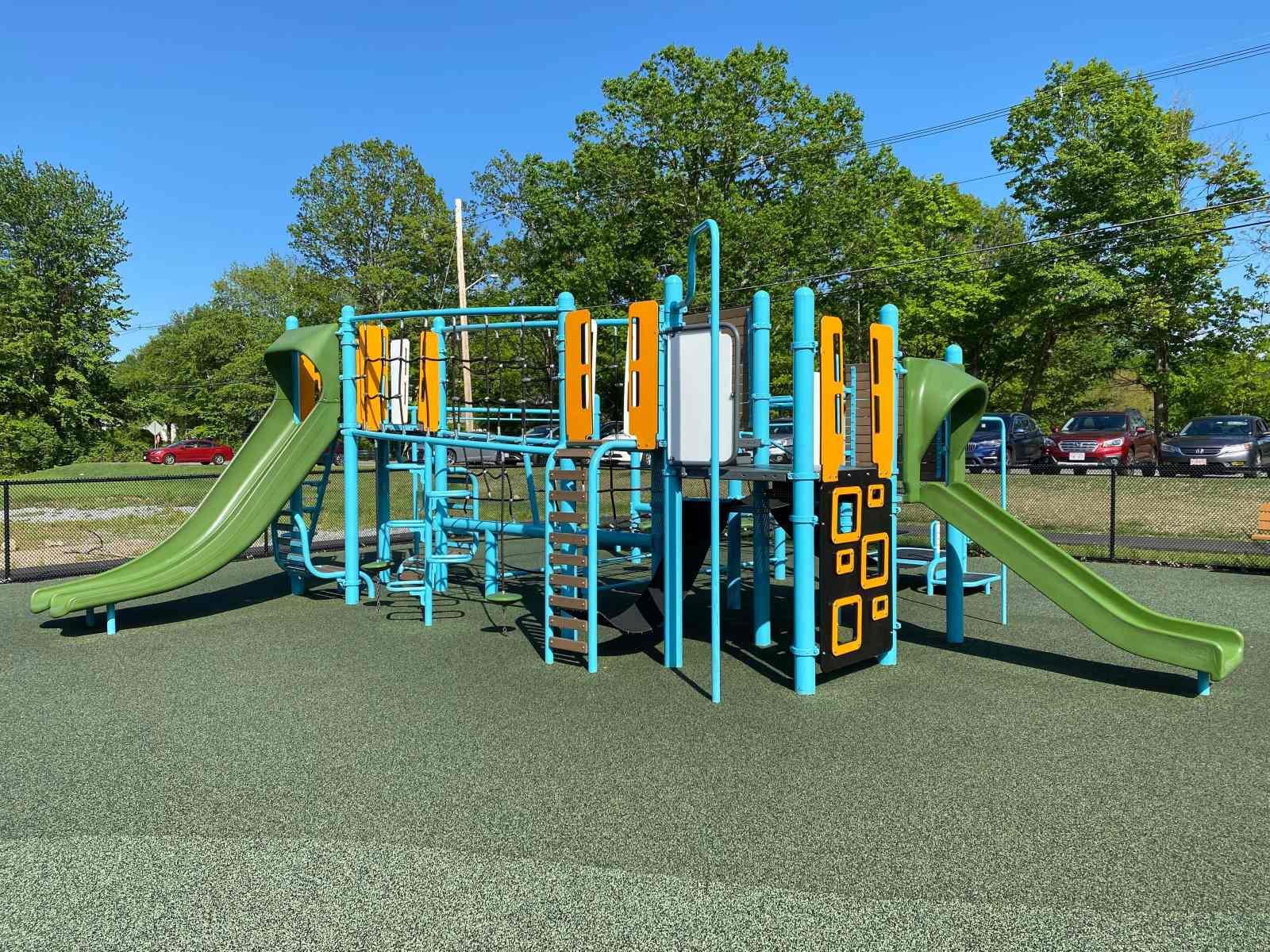
Playgrounds are an integral part of childhood, offering countless hours of fun, imagination, and outdoor play. But did you ever stop to think about the fascinating facts behind these popular recreational spaces? From their historical origins to their impact on child development, playgrounds have a wealth of interesting and educational information to offer. In this article, we will dive into 19 fascinating facts about playgrounds that will not only fascinate you but also shed light on the importance of these spaces in shaping children’s lives. So, fasten your seatbelts and get ready for an adventure that will take you through the intriguing world of playgrounds!
Key Takeaways:
- Playgrounds have been around for centuries, promoting physical, cognitive, and social skills in children. They come in various types and are designed to be safe, inclusive, and fun for all.
- Playgrounds are not just for play—they also support children’s development, foster imagination, and provide therapeutic benefits. They are found worldwide and are protected by safety regulations to ensure a secure environment for all.
Playgrounds date back to ancient civilizations.
Playgrounds have been around for centuries, with evidence of early playgrounds in ancient Egypt and Greece. These early play spaces were designed to promote physical activity and social interaction.
The first modern playground was created in 19th-century Germany.
In 1816, Friedrich Fröbel introduced the concept of a “kindergarten,” which included an outdoor play area. This marked the beginning of organized play spaces specifically designed for children.
Playgrounds provide numerous benefits for children.
Playgrounds offer opportunities for children to develop physical, cognitive, and social skills. They promote creativity, imagination, and problem-solving abilities.
Playgrounds come in various types.
From traditional playgrounds featuring swings and slides to modern adventure playgrounds with climbing structures and water play areas, there is a wide range of playground designs to cater to different interests and age groups.
Playground safety is a top priority.
Playground equipment undergoes rigorous safety testing to ensure it meets industry standards. Additionally, proper maintenance and regular inspections help maintain a safe and enjoyable play environment.
Playgrounds can be found in diverse locations.
Playgrounds are not limited to schools and parks. They can also be found in malls, restaurants, and even airports, providing children with an opportunity to play while waiting or shopping.
Playgrounds encourage inclusive play.
Many playgrounds now include features that cater to children with disabilities, promoting inclusivity and ensuring that all children can participate in play.
Playgrounds promote physical fitness.
Active play in playgrounds helps children develop strength, coordination, and overall fitness. It contributes to a healthy lifestyle and helps reduce the risk of childhood obesity.
Playgrounds stimulate sensory development.
Playground equipment such as sandboxes, swings, and sensory pathways provide opportunities for children to engage their senses, enhancing their cognitive and sensory development.
Playgrounds foster social interaction.
Playgrounds offer a space for children to engage with their peers, fostering friendship, teamwork, and conflict resolution skills.
Playgrounds can spark imaginative play.
Whether it’s pretending to be pirates on a play ship or creating imaginary worlds in a playhouse, playgrounds inspire children’s imagination and creativity.
Playgrounds promote risk-taking in a controlled environment.
By allowing children to engage in physical activities and take calculated risks, playgrounds teach them how to assess and manage risks while still providing a safe environment.
Playgrounds support cognitive development.
Playgrounds offer opportunities for children to problem-solve, make decisions, and think critically, contributing to their cognitive development.
Playgrounds can have nature-inspired designs.
Many modern playgrounds incorporate natural elements such as trees, rocks, and water features to create a more immersive and environmentally-friendly play environment.
Playground equipment is constantly evolving.
With advancements in technology and design, playground equipment continues to evolve to provide new and exciting play experiences.
Playgrounds are important for childhood development.
Research has shown that play is crucial for children’s physical, emotional, and social development, and playgrounds play a vital role in facilitating this development.
Playgrounds can be therapeutic.
Playgrounds are not only fun but can also serve as therapeutic spaces for children with special needs, promoting sensory integration and emotional well-being.
Playgrounds are protected by safety regulations.
Various safety regulations and standards are in place to ensure that playgrounds provide a safe and secure environment for children.
Playgrounds are a universal concept.
Playgrounds can be found in different countries around the world, reflecting the importance of play in all cultures and societies.
Conclusion
In conclusion, playgrounds are not just places for children to have fun and burn off energy; they also offer numerous benefits for their physical, cognitive, and social development. From improving balance and coordination to fostering creativity and imagination, playgrounds provide a safe and engaging environment for children to learn, explore and interact with others. By incorporating elements such as swings, slides, climbing structures, and sensory play, playgrounds cater to a wide range of ages and abilities, ensuring that every child can actively participate and enjoy themselves.Moreover, playgrounds encourage children to engage in active play, which helps in addressing the growing concern of childhood obesity. By providing a space for children to run, jump, climb, and play various games, playgrounds contribute towards a healthier lifestyle for kids. Additionally, playgrounds promote social interactions, cooperation, and problem-solving skills as children interact with their peers, negotiate and take turns on the various equipment.In summary, playgrounds serve as more than just recreational spaces. They contribute significantly to the holistic development of children, promoting physical fitness, creativity, social skills, and overall well-being.
FAQs
1. Are playgrounds only for young children?
No, playgrounds cater to a wide range of ages and abilities. There are specific areas and equipment designed for toddlers, preschoolers, and older children to ensure that everyone can enjoy the playground.
2. Are playgrounds safe for children?
Playgrounds are designed with safety in mind. They often include safety features such as rubberized surfaces, cushioned structures, and age-appropriate equipment to minimize the risk of injuries. However, it is essential for parents and caregivers to supervise children and teach them proper playground etiquette.
3. Can playgrounds enhance a child’s cognitive development?
Yes, playgrounds provide opportunities for children to engage in imaginative play, problem-solving activities, and social interactions, all of which contribute to cognitive development. The different challenges and stimuli available in a playground environment can enhance a child’s thinking abilities.
4. How often should children visit playgrounds?
Regular visits to playgrounds are beneficial for children’s physical health and overall development. However, the frequency of visits can vary depending on factors such as weather, availability, and individual preferences. It is recommended to let children engage in active play for at least 60 minutes every day, which can be achieved through regular visits to the playground.
5. Are playgrounds designed inclusively for children with disabilities?
Many modern playgrounds now incorporate inclusive design strategies to accommodate children with disabilities. This includes providing accessible ramps, adaptive swings, and sensory play areas to ensure that all children can actively participate and enjoy the playground experience.
Playgrounds offer endless opportunities for fun and growth, but there's even more excitement waiting to be explored. From the thrilling amusement parks of Coney Island to the nostalgic world of King Bob and his recess adventures, curiosity knows no bounds. For those seeking a blast from the past, delving into the captivating history of Pogs promises a delightful journey down memory lane. So why stop here? Keep reading to uncover more intriguing facts that will leave you amazed and inspired.
Was this page helpful?
Our commitment to delivering trustworthy and engaging content is at the heart of what we do. Each fact on our site is contributed by real users like you, bringing a wealth of diverse insights and information. To ensure the highest standards of accuracy and reliability, our dedicated editors meticulously review each submission. This process guarantees that the facts we share are not only fascinating but also credible. Trust in our commitment to quality and authenticity as you explore and learn with us.


